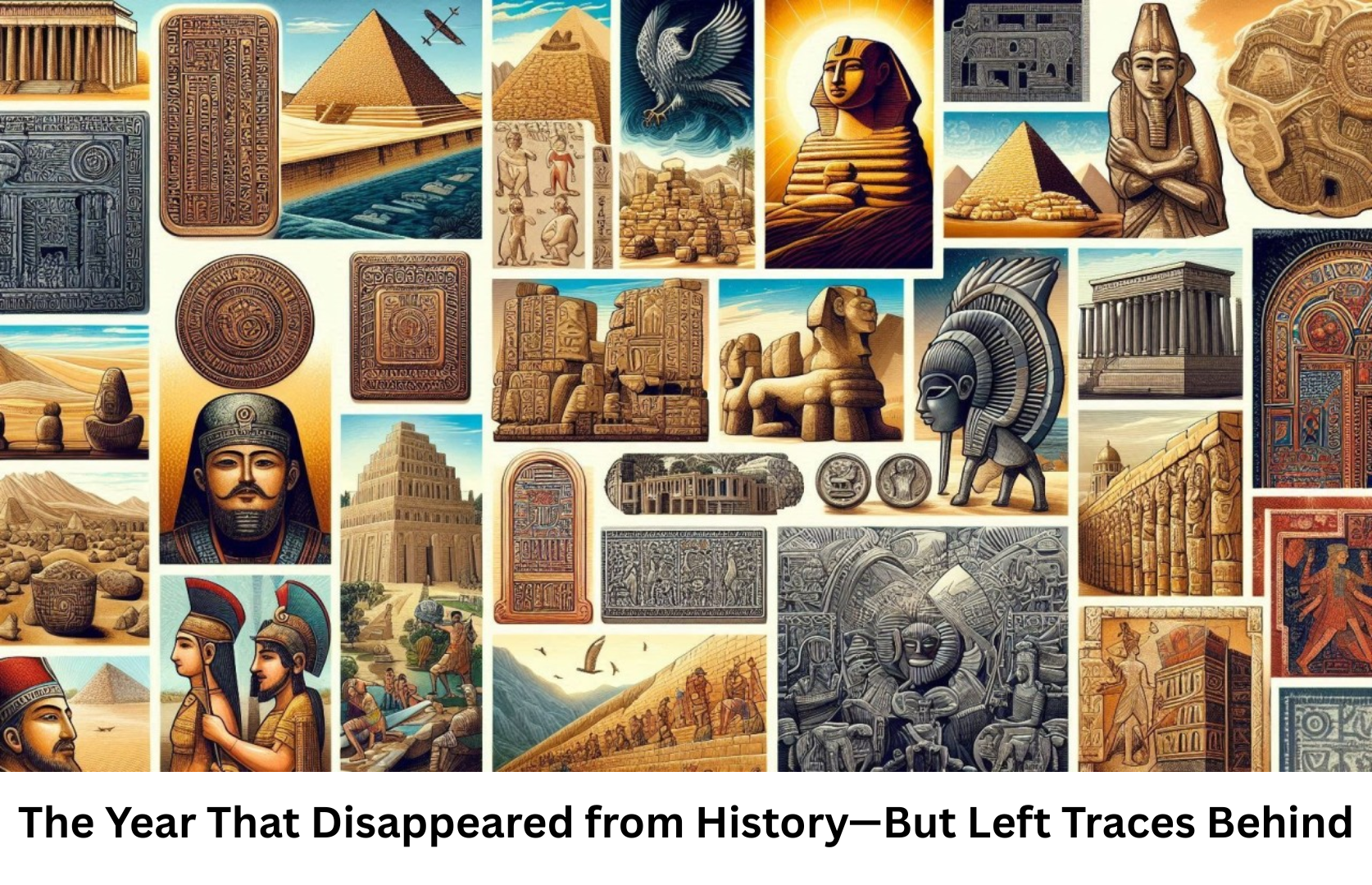Imagine living through a year, but when you look back, it’s as if that time was wiped away, forgotten by history. The idea of a missing year might sound like a concept out of science fiction or an alternate timeline, but it’s not as far-fetched as it seems. In fact, history is dotted with mysterious gaps, lost events, and unexplained periods where time seems to have vanished or been erased. The “Year That Disappeared” refers to these curious instances in history, where records, events, or even entire periods of time have seemingly been erased or ignored—leaving behind only faint traces for those who dare to search for them.
The Disappearance of a Year: A Global Puzzle
While the concept of a “disappearing year” might not be something you’d typically find in textbooks, history is rife with examples of time periods that seem to have slipped through the cracks. Some of these periods are more literal, like a year that failed to make its mark due to war or natural disasters. Others involve gaps in calendars, lost historical records, or events that were intentionally erased.
One of the most famous instances of a “lost year” involves the period of 1582 in European history. Thanks to the switch from the Julian calendar to the Gregorian calendar, most of Europe had to skip ten days in October of that year. People went to bed on October 4, 1582, and woke up the next day to October 15, 1582, essentially losing an entire chunk of time. This transition was meant to correct the inaccuracies in the Julian calendar, but to the people of that time, it was as if a part of history had simply vanished. This isn’t just a strange glitch; it’s a reminder of how calendars and the measurement of time can affect the way we experience history.
Gaps in Time: The Missing Years in Ancient Civilizations
Other instances of lost time can be traced back to the ancient world. Ancient civilizations often kept meticulous records, but many of these records were destroyed or lost over time. For example, the ancient Mayans, known for their highly advanced calendar system, left behind a complex set of time-keeping methods that span thousands of years. However, much of their history remains a mystery. There are periods where records appear to vanish, leaving us to wonder what happened during these gaps. Did the Mayans disappear for a while, or was there a deliberate effort to erase their achievements?
Similarly, the Egyptians left behind massive monuments, but some periods of their history are remarkably under-documented. The so-called “dark ages” of Egypt remain a subject of intrigue and debate, as historians attempt to piece together the events that took place during times when records were sparse or destroyed.
Political Erasure: Lost Years in History
There are also instances where history itself was deliberately altered or erased by political regimes. One of the most notorious examples of this occurred during Stalin’s rule in the Soviet Union. In the 1930s and 1940s, Stalin oversaw a systematic effort to erase the legacies of those he deemed “enemies of the state.” Leaders, intellectuals, and entire events were expunged from official records, creating a sort of “disappearing history.” During this period, some individuals vanished from photos, documents, and even the memories of those who lived through it. The phenomenon of “historical erasure” left behind traces—scraps of stories, photographs, and rumors—that historians still uncover to this day.
Even closer to modern times, the Nazis’ attempt to erase history through the destruction of Jewish communities and the burning of books left large gaps in European history. The devastation and loss were so profound that historians often find themselves facing a haunting sense of missing time, not just in terms of numbers, but in terms of cultural and intellectual loss.
The Search for Traces: What We Can Learn from the Lost Years
Although many of these years or periods of history remain lost, they still leave behind clues and traces. Whether it’s a missing journal, a half-buried artifact, or a peculiar gap in the records, historians and researchers continue to piece together the puzzle of these vanished years. The clues often come from unexpected places—old letters, oral traditions passed down through generations, or even archaeological digs that uncover long-forgotten relics.
The “Year That Disappeared” serves as a reminder that history is not a perfect, linear progression. It’s shaped by human error, intentional erasure, and natural forces beyond our control. But even when entire years or periods of time seem to disappear, the traces they leave behind offer insights into who we are, where we’ve been, and how we’ve shaped the world we live in today.
Conclusion: The Power of What’s Left Behind
In the end, the year that disappeared from history may be elusive, but its traces are invaluable. Whether it’s a calendar change, the erasure of a political regime, or the loss of an ancient civilization’s records, these gaps in history teach us about the fragility of time itself. They remind us that what is remembered is often as important as what is forgotten. And while some years may slip away from the historical record, the stories they leave behind continue to captivate and inspire us, urging us to search for the hidden fragments of our past that still shape our present.
History may not always be complete, but the traces of the years that vanished are what ultimately help us understand where we truly stand in the grand timeline of the world.
